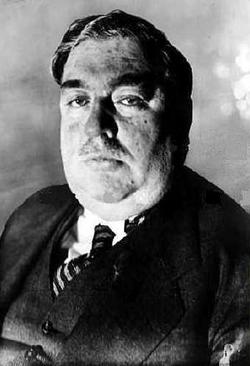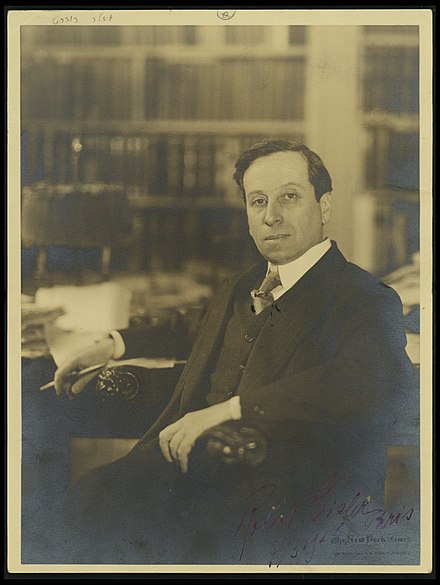Timeline: 1760 - 1830
Killer: Lewis Hutchinson
Epithet: The Mad Master”, “The Mad Doctor of Edinburgh Castle”
Type: Thrill
Nationality: Jamaican/Scottish
Hunting ground(s): Edinburgh Castle
Years active: c. 1760 - 1773
Weapon(s) used: Gun
Signature (if any): Said to have drunk the blood of his victims (though unsubstantiated) and also known to have lured visitors to his castle and fed them before turning on and killing them.
Victims: Unknown, but believed to be in excess of 40
Survivors: None known
Caught by: Royal Navy
Fate: Hanged
A Scottish immigrant who came to Jamaica to build his own castle and run a plantation, Lewis Hutchinson was known to be a cruel man. He treated his slaves badly (quite possibly murdered some, though given how little thought was given to slaves’ rights in the eighteenth century, impossible to confirm as none would have been reported, or taken seriously by the authorities if they were. A man had a right to beat, maim and even kill slaves if they disobeyed him) and had them dispose of the bodies of his victims. Hutchinson did not fit today’s real criteria for a serial killer, because while he certainly is believed to have killed enough to qualify, he seems to have had no actual “type”. He killed men, women, people of all races and social standings, and he killed purely for sport. He does not seem to have got off on it, and though he kept up to forty-three wristwatches, presumably as trophies, he doesn’t appear to have killed for financial gain, being rich enough anyway.
As his castle, which he called - with a dark nod, no doubt, back to his home country - Edinburgh Castle, was the only real habitation on the road from St. Ann’s Bay, his became a popular spot for travellers to rest, usually in peace, or indeed pieces, as it’s said he dismembered his victims and had them thrown into a hole where animals could feast on them. He is also said to have drank their blood, but this is likely a superstition propagated by the slaves and other Jamaican natives, who surely saw him as some sort of demon. Maybe he did drink blood, but there is no evidence to suggest this. His crimes, and the nature of them, are reported in
The Annals of Jamaica, Vol 2 (1828) by the Reverend George Bridges:
"Yet no traveller who attempted that defile, however poor or wretched he might be, ever escaped the confines of their owner’s narrow territory. The needy wanderer would sometimes call for refreshment at the only habitation which for many miles had cheered his weary eye, but it was the last he was destined ever to behold. The wealthy passenger was alike the mark and victim of his unerring aim from a loop-hole under which he was compelled to pass. A thick-set hedge of logwood had also been so prepared by the road-side, at a short distance from the house, that while he could detain in conversation any one who might pass during the time that he was engaed in his cattle-fold hard by, his slaves from behind the fence could leisurely take aim at the devoted victim. …
To enjoy the gory spectacle, he first dissevered the ghastly head from the palpitating body: his most pleasing occupation was to whet his streaming knife; the gloomy temper of his soul was sated only by a copious flow of blood; and when he could no longer gaze upon the decaying countenance, he placed it high in the air, in the hollow trunk of a cotton tree, where vultures might complete the horrid deed. The mangled carcass was thrown down one of those deep and hollow drains which are peculiar to mountainous countries of volcanic origin, and whose mouths, descending perpendicularly, conduct the torrents which periodically fall to the level of the ocean."
His luck finally ran out in 1773 when he shot a soldier who had been sent to arrest him. Suspicion had grown as more and more people disappeared along that road, and his being the only habitation was a two-edged sword, creating a hunting ground for him but also placing him firmly in the frame when the disappearances came to light. Having shot the soldier he went on the run, but the Royal Navy captured him as he tried to flee the island, and he was brought back, tried and executed by hanging. During his trial, evidence of two accomplices came to light, and these were hanged also.
Hutchinson has the dubious honour of being the first serial killer Jamaica ever knew, and also one of the, at that time, few Scottish ones. Oddly enough, or perhaps not, as the testimony of his slaves was both hearsay and, well, they were slaves with presumably an axe to grind, Hutchinson was only tried for the one murder, that of the soldier who tried to apprehend him. In the course of the trial, however, stories were investigated and the castle searched, turning up damning evidence that the “Mad Doctor” had indeed killed more than just one person, many more. It is perhaps slightly gratifying that his last wishes were not granted, as he had left money to have his tombstone inscribed with the epitaph he had chosen for himself, showing defiance even in death:
"Their sentence, pride and malice, I defy. Despise their power, and like a Roman, die". Of course, this is all nonsense and bravado: had he really died like a Roman he probably would have been crucified. I suppose you could say hanging was too good for him.
Killer: Dorcas Kelly
Epithet: “Darkey” Kelly
Type: ?
Nationality: Irish
Hunting ground(s): Dublin (maybe)
Years active: 1761
Weapon(s) used: ?
Signature (if any):
Victims: Said to be 6
Survivors: 0
Caught by: Police
Fate: Partially hanged and then burned at the stake (see below)
I have my doubts, I have to be honest. There are conflicting stories about this so-called first Irish serial killer (which is bull, as I’ll note in a moment) but one fact that all accounts agree on is that she was a madam, ran a brothel in Fishamble Street in Dublin called the Maiden Tower (pity it wasn’t called Maiden Ireland huh?) and that she killed, or was accused of killing, a shoemaker, for which heinous crime she received a really gruesome death. Now, some stories maintain that she had become pregnant by the Sheriff of Nottingham sorry Dublin, and that he, unwilling to face the scandal and lose his position in society (and probably is job too) accused her of witchcraft, and of killing her baby (whose body was never located) in a Satanic ritual which led to her burning.
Other accounts refer to the discovery, after her death, of the corpses of five men in her brothel, yet you have to wonder why she would have done such a thing? Surely it would have been bad for business? At any rate, those accounts are substantiated here, debunked there, so I really don’t see that much evidence that she was a serial killer. If anything, she killed one man (if she did) and suffered a horrible death for it. As for being, as many websites claim, Ireland’s first serial killer, well sure haven’t we already come across her, in the shape of Alice Kyteler, way back in the fourteenth century? All right, she was of Flemish descent, but she lived in and perpetrated her crimes in Ireland, which for me makes her the first Irish serial killer. She certainly has more a claim to it than this unfortunate brothel owner, who may not even have killed the man she was accused of, and for whom she burned. The account of her execution is pretty harrowing:
She was placed on a stool something more than two feet high, and, a chain being placed under her arms, the rope around her neck was made fast to two spikes, which, being driven through a post against which she stood, when her devotions were ended, the stool was taken from under her, and she was soon strangled. When she had hung about fifteen minutes, the rope was burnt, and she sunk till the chain supported her, forcing her hands up to a level with her face, and the flame being furious, she was soon consumed. The crowd was so immensely great that it was a long time before the faggots could be placed for the execution.[4]
— Edward Cave ("Sylvanus Urban"), The gentleman’s magazine, and historical chronicle, Volume 43, London, 1773
Can’t really see any man going through such a painful death, can you? Of course, prostitutes were reviled, in Ireland as much as anywhere else, though possibly more in such a devoutly and staunchly Catholic country, and women have been traditionally the scapegoats for everything down through history, most especially the uncontrolled appetites of men.
 Killer:
Killer: Darya Nikolayevna Saltykova
Epithet:
Type: Lust, possibly Power/Control
Nationality: Russian
Hunting ground(s): Moscow (her palace)
[b]Years active:]/b] 1756 - 1762 approx.
Weapon(s) used: Torture
Signature (if any):
Victims: 26 - 138
Survivors: 0
Caught by: A complaint brought against her which resulted in an investigation by the Empress
Fate: Life imprisonment
A sort of Russian contemporary of the infamous Countess Bathory, Saltykova was another one who was able to act out her sadistic urges without fear of reprisal due to her high social status. Marrying into the wealthy and powerful noble family of Saltykov, she lost her husband at age 26 and so under Russian law inherited his estate, making her a wealthy woman. She was also sad though, alone now and without a husband. She met Nikolay Tyutchef and they fell in love, but Darya was betrayed by her new young lover, who had not only his own mistress but had in fact married her in secret. When Darya found out about it she flew into such a blind fury that Nikolay thought it best to be elsewhere and legged it with his new bride. In frustration at not being able to take her revenge on her unfaithful lover, Darya turned to easier, more available targets for her anger.
She immediately began to indulge herself by beating, abusing, torturing and killing her serfs, or servants, who had no voice with which to complain to the authorities. Some did, but this only resulted in either their being ignored and not believed, or in some cases being punished by the law for daring to accuse a member of a noble family. Meanwhile Darya continued to take out her anger on her serfs. She saw each younger woman as a substitute for the one who had stolen away her Nikolay, and the younger they were the more she hated them. There was no age limit for her victims, and many of them were children. She would beat them, kick them out in the freezing snow naked, pour boiling water on them, snap their bones and find other and more devious ways of hurting them. She confined, as you might suspect, using the twisted logic of the killer and allying it to the even more twisted reason of the scorned woman, her attacks to females, though she did kill three men. These are said to have been accidents, though it seems unlikely she cared.
Eventually a case was brought against her and the Empress Catherine II, trying to push new law reforms, decided to allow an investigation into the Countess. This took six years, during which time evidence was gathered, testimony taken and though the case against her looked solid, Darya remained unrepentant. She refused to admit to being mad or sick, and scorned the efforts of the court to convict her, confident in her arrogance that she would be acquitted. Nobody would dare convict a noblewoman, especially on the word of mere serfs! But she had reckoned without the empress’s desperation to ensure justice would be seen to be done on her watch, no matter the standing of the accused, and she was accordingly found guilty in 1768. This, however, presented its own set of problems.
Darya could not be sentenced to death, though she certainly deserved to die, as the death penalty had only been abolished in Russia four years earlier. In addition, Catherine needed the support of the noble families, who would surely not stand for the execution of one of their own. So she had to come to a compromise. In the end, it really wasn’t much, considering Darya’s crimes. The countess was made stand on a platform in public, with a notice hung around her neck declaring her as a torturer and murderer. This punishment lasted for a single day, after which she was shipped off to a convent and imprisoned there, where she died in 1801.
Actually, reading on, it wasn’t so great for her. It’s not as if, as I originally believed, she was just allowed to join the convent but not allowed to leave. She was in fact literally imprisoned there. The convent, the Ivanovsky Cloister, was a well-known “secret prison” for women, especially those of the nobility, who had transgressed against the empire; political activists, inconvenient mistresses, criminals of all stripes who were held by the sisters as basic unofficial gaolers. The women were held in isolation and so was Darya; chained to the wall of a windowless cell and allowed a candle only to enable her to eat when food was brought, the candle being taken away when she was finished eating. An extra punishment, for such a supposedly pious woman, was to be brought within range of the mass but forbidden to actually take part in it. She was under twenty-four hour guard.
After eleven years she was transferred to a cell with a window and shutters, but her personality, never the sweetest, had been further soured by her isolation, and she now spat at and cursed visitors, refusing to see anyone. I also note that the day spent on the platform mentioned above seems to have involved what’s described as a “public beating”, so maybe an appropriate, if totally insufficient punishment. It also seems clear that, in contrast to Bathory, whose crimes it’s alluded may have been either exaggerated or pure fabrication on the part of her noble rivals, given this was a six-year investigation and Catherine was known for her fairness and diligence, it’s unlikely this was the case with Darya Saltykova. Not only that, but whereas Countess Bathory denied her crimes, her counterpart not only admitted to, but gloried in them and was entirely unapologetic, even damning and cursing the priest sent to extract her confession during her trial. A nasty piece of work, indeed. If there is a Hell, I imagine her soul went directly there after her death.
 Killer:
Killer: Yi Seong/Crown Prince Sado
Epithet:
Type: Lust (?)
Nationality: Korean
Hunting ground(s): Palace of Changdeck, Hanseong, Kingdom of Joseon (Korea)
Years active: 1750 - 1762
Weapon(s) used: Various
Signature (if any):
Victims: Unknown, but believed to be in excess of 100
Survivors: 0
Caught by: The king
Fate: Sealed up in a rice chest and left to die
Not, on the face of it, a man you would consider would grow up to become a serial killer, Yi Seon was absolutely terrified of his father the king, who did everything he could to humiliate and demean the young regent. Nothing Yi Seon could do was good enough for the king, and when his porcupine, sorry concubine fell pregnant, the prince was so s
hit-scared of what daddy would say that he tried, unsuccessfully, to have the baby aborted. As the treatment from his father intensified, Yi Seon began, somewhat like Darya Saltykova, to take it out on his servants, beating and killing his eunuchs, even beheading at least one. He also raped ladies-in-waiting, secure in the privilege of his position and the certainty that nobody would dare report him or act against him.
Used to getting his way with women by beating them until they gave in to his sexual advances, Yi Seon first assaulted a member of his own family when he beat his second concubine so badly that she died of her wounds, something he took absolutely no notice of. How many slaves, servants, eunuchs and ladies-in-waiting he killed is unknown, but this was the first “real” death, as it were; the first killing of someone who was somewhat on his own social level. When it was rumoured though that he planned to kill his father, the king had a dilemma, something similar to that which faced Catherine II with Darya Saltykova. There was in Korea at the time a thing called communal punishment, where quite literally the sins of the father were visited on his son, in fact, on his whole family. So if Yi Seon was executed, so too would have to be his whole family.
The king got around this by the expedient of ordering his son to climb into a rice chest, which was only four feet square, on a very hot day in summer. After seven days locked in the chest the prince died and was removed. I suppose the idea is then that this was considered either suicide or an “unfortunate accident”.













 ) and decapitated
) and decapitated










 Linear Mode
Linear Mode
